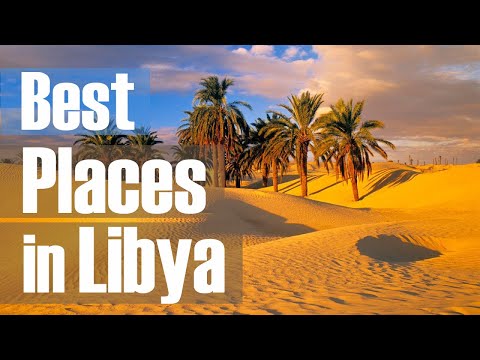
1. **Tripoli – The Vibrant Capital:**
Tripoli, Libya’s capital, is vibrant with history and culture. Known as the “Mermaid of the Mediterranean”, it boasts stunning Ottoman landmarks like the Gurgi and Karamanli mosques, along with Italianate architecture from its colonial past. The Red Castle Museum (Assaraya al-Hamra) offers insights into Libya’s rich heritage.
2. **Leptis Magna – Roman Splendors:**
One of the most spectacular Roman archaeological sites in the Mediterranean, Leptis Magna offers well-preserved ruins that include a theater, basilica, triumphal arch, and ancient marketplaces. Its seaside location makes it especially picturesque.
3. **Sabratha – A Window to Ancient Rome:**
This UNESCO World Heritage site was an important Roman outpost on the Mediterranean coast. Sabratha’s amphitheater with its stunning backdrop of the sea remains a highlight for its impressive state of preservation and detail.
4. **Cyrene – A Greek Past:**
Located in Eastern Libya near Shahhat, this ancient Greek city is another UNESCO-listed site featuring temples, cisterns, and public baths that paint a picture of daily life over two millennia ago.
5. **Ghadames – The Pearl of the Desert:**
Known as ‘the jewel of the desert’, Ghadames has exquisite architecture unique to the region that demonstrates indigenous responses to desert climates; its covered streets provide cool passageways between homes constructed from mud-brick.
6. **The Acacus Mountains (Tadrart Acacus) – Art in Isolation:**
This surreal desert landscape features sandstone mountains with thousands of prehistoric rock paintings and engravings dating back as far as 12,000 years B.C., offering a breathtaking window into human history.
7. **Benghazi – A Cultural Hub:**
Libya’s second-largest city has been an economic hub through history due to its port on the Gulf of Sidra. Benghazi is renowned for both its modern Italian-style downtown and ancient Greek theatre in nearby Tocra.
8. **Apollonia – Coastal Charm:**
Near Susah (ancient Susa), Apollonia was once Cyrene’s port city but now stands out for its own ruins which beautifully overlook the Mediterranean Sea including churches, palaces, and Byzantine public baths.
9. **Ghat – Festivals & Tradition:**
Nestled among towering akakus cliffs on one side and sweeping sand dunes on another, Ghat hosts annual festivals celebrating Tuareg culture that includes music performances showing off their rich traditions.
10. **The Sahara Desert – Boundless Exploration:**
Covering much of Libya’s interior territories is one vast expanse of golden sands known globally — The Sahara Desert offers thrilling explorations such as camel trekking or adventure driving experiences across seemingly endless horizons.
Visiting these destinations provides not just a journey through stunning landscapes but also an encounter with layers of human civilization each adding their narrative to what makes up present-day Libya despite ongoing challenges faced by this intriguing country.
Before planning your trip to Libya or any part involved therein it is crucially important to check current travel advisories due to political instability in regions across North Africa including safety risks which could potentially influence such travels adversely affecting visitors’ overall experience.
